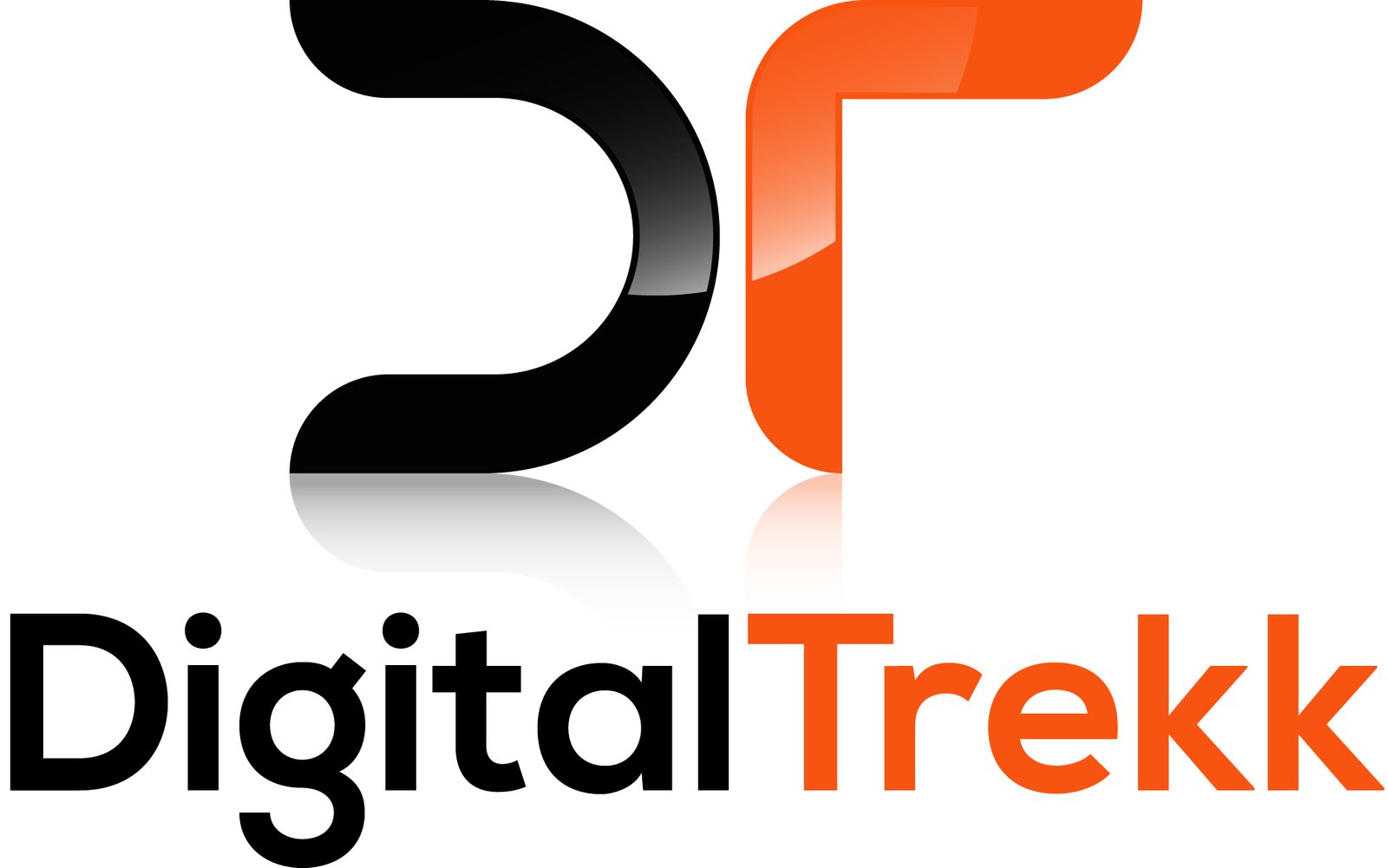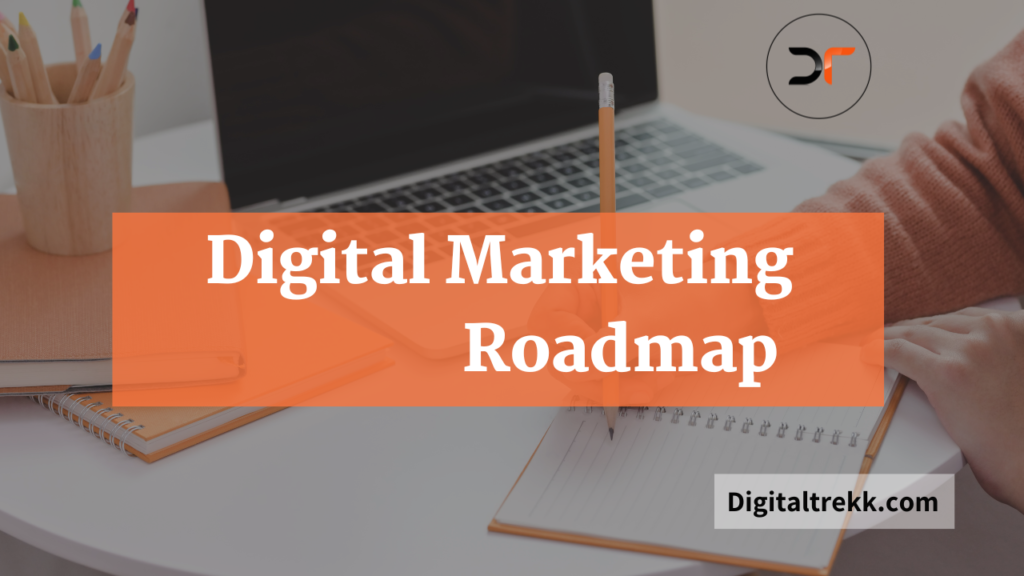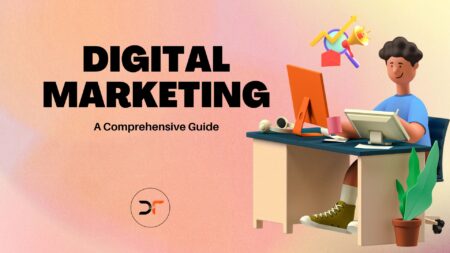Embarking on the complex journey of the digital marketing landscape can often seem overwhelming. However, with the right digital marketing roadmap, you can stand out and achieve success. This guide will help you understand and conquer the multifaceted digital marketing ecosystem by crafting a well-defined strategy that encompasses website design, content creation, and staying up-to-date with the latest trends.
Setting Digital Marketing Objectives
Embarking on a digital marketing journey requires setting clear and challenging objectives. It’s not just about increasing website traffic, but also about turning those visitors into engaged customers. To achieve this, create SMART goals – Specific, Measurable, Achievable, Relevant, and Timely. Understand your business thoroughly, determine what you want to achieve online, and set benchmarks. With well-defined objectives, you can navigate the digital landscape with confidence and clarity, knowing that each goal illuminates your path to success.
Identifying Your Target Audience
- Knowing who to address is the foundation of every successful marketing strategy. Crafting messages without considering the recipient is like shooting arrows in the dark.
- To engage effectively, one must listen to the audience’s whispers— their needs, preferences, and pain points. This insight shapes communication that resonates, compels, and converts.
- Precision in targeting escalates the impact of every marketing dollar spent.
- Identifying your target audience isn’t just about demographics; it’s about psychographics and behaviors. It requires delving deep into the minds and lives of potential customers—uncovering not just who they are, but why they should care about your brand. This empathetic approach can set the stage for a marketing symphony that hits every note with precision and purpose.
Defining SMART Goals
- Your marketing aspirations must be crystalized into fortified goals—Specific, Measurable, Achievable, Relevant, and Time-bound, forming the SMART framework.
- Each goal must carve a clear path to success, without ambiguity.
- Goals become achievers’ lighthouses, guiding actions with precision and intentionality.
- Assure that each objective stands tall, quantifiable (numbers don’t lie), and within reach.
- Your goals should be akin to a bowstring—taut with relevance and primed to propel strategies with force, syncing perfectly with your business’s heartbeat.
- Each deadline acts as an accountability partner, ensuring that time’s tide doesn’t sweep away focus.
Aligning with Your Brand Vision
- Your brand vision is an embodiment of aspirations that echo the core purpose of your business. It should be unambiguous, reverberating through every strategy, decision, and customer interaction on your digital marketing journey. Your vision sets the compass for your brand’s direction.
- Every digital step should resonate with your core brand message. This cohesion ensures lasting brand recognition and loyalty.
- A disconnected campaign is like a stray arrow; it misses the target of impactful brand resonance. Coherence in messaging (across platforms, content, and campaigns) is key to securing that bullseye.
- Even as trends shift, your brand vision must remain the anchor. It ensures consistency, providing a stable narrative that customers can rely on amidst the digital noise.
Digital landscapes are mutable, but your brand’s voice should remain distinctive. It should cut through the static, influencing your target audience’s perception—steering them towards the experiences that embody your brand at its quintessential best.
Indeed, aligning with your brand’s vision is not ancillary; it’s foundational. Leveraging that alignment creates a resonant brand story that captivates and converts your target audience.
Establishing a Strong Online Presence
Building a formidable online presence begins with a well-crafted website, the cornerstone of your digital identity. Without a professional, user-friendly site, you risk losing credibility and potential customers.
Making your website search engine-friendly through optimization (SEO) is a crucial step.. to ensure high visibility, but equally important is maintaining an active profile on relevant social media platforms, where engagement can lead to conversion and brand loyalty.
Investing in digital advertising and content marketing should complement your online footprint, reinforcing your presence and driving traffic to your ‘digital storefront’.
Optimizing Your Website for SEO
Optimizing your website is vital, as it vastly improves your visibility to search engine users. It’s the process of making your site attractive to search engines like Google, thereby increasing the likelihood of appearing closer to the top of search results.
Consider your website as a piece of art in an enormous gallery; without signs or a guide, how will visitors find it? This is where SEO comes in. By incorporating relevant keywords, crafting engaging meta descriptions, and creating quality content, your website becomes a beacon to search engines. They, in turn, guide users directly to your site for the information or services they seek.
However, SEO isn’t just about keywords and content; it’s also about website performance. Fast loading times, mobile responsiveness, and secure browsing with HTTPS are pivotal. Google prioritizes sites that deliver a stellar user experience, which means these technical details can significantly boost your website’s search engine rankings.
Moreover, constantly refining your SEO strategy is paramount in staying ahead. Regularly analyze your website’s performance, embrace SEO trends like voice search optimization, and look out for algorithm updates. Implementing structured data, for example, can bolster your website’s chances of enhanced display in search results. These proactive measures ensure your website remains a strong contender in the relentless competition for digital visibility.
Leveraging Social Media Platforms
Social media is a powerhouse of marketing potential, a conduit for brand narratives that resonate on a personal level with diverse audiences across the globe. It’s where businesses craft their digital persona, fostering connections and creating engaging experiences that translate into customer loyalty.
Your presence on these platforms can shape brand perceptions. Embrace varied content forms like live videos, stories, and posts to showcase company ethos and values.
Analytics from social platforms provide insights into consumer behavior. Utilize this data (engagement rates, peak times, and demographic information) to refine your marketing strategies.
To sway the digital populace, influencers can amplify your brand. Collaborating with the right personalities introduces your offerings to a broader yet targeted audience, sparking viral conversations and conversions.
An active social media presence demands consistency and authenticity. Regularly engaging with followers builds trust, making customers more likely to convert and promote your brand through word-of-mouth.
Finally, keep abreast of evolving trends to stay ahead. Leveraging emerging technologies, like augmented reality filters or new platform features, will keep your brand fresh and prominently positioned in your consumers’ feeds.
Consistent Brand Messaging
Consistency is the cornerstone of brand recognition. Your message must resonate consistently across all digital channels to fortify brand identity and customer loyalty.
Strategically, consistent brand messaging forms the bedrock of customer trust. It signals to your audience that you are reliable and dependable, leading to a solidified brand reputation. This consistency should extend across all points of communication—from website copy to social media posts, ensuring that your brand voice and values are unmistakable and compelling. Over time, consistency in your messaging generates brand familiarity, which in turn can foster a loyal customer base inclined towards advocacy.
Furthermore, uniformity in messaging aids in differentiating your brand from competitors. A distinct voice and message, echoed throughout your digital presence, reverberate with the core identity that your audience connects with. Harmonized messaging becomes your signature, enhancing brand recall and making your business the preferred choice among discerning customers.
To exemplify, imagine a tapestry woven with intricate patterns; each thread contributes to the overall design. This is akin to how every piece of content should intertwine to present a coherent brand story. Building this synergy across all platforms, creating a narrative that is both captivating and familiar, invigorates your audience’s engagement. They begin to recognize and trust your brand’s voice, paving the way for unparalleled loyalty and ultimately, inspiring profitable customer actions through consistent brand messaging.
Crafting a Content Marketing Strategy
Content is the undisputed ruler in the realm of digital marketing.Your audience craves valuable, relevant information that answers their questions and enriches their lives. To deliver this, one must delve into devising a content marketing strategy that resonates with both heart and mind. Identify your audience’s core needs, map out their journey, and produce high-quality content that guides and grows with them. Whether it is insightful blog posts, engaging videos, or informative infographics, every piece of content should be a stepping stone in constructing a trustworthy relationship with your audience. It should amplify your brand’s voice, echoing your unique selling proposition through the vast digital expanse like a beacon, guiding your audience back to you, time and again.
Generating Valuable Content Ideas
Scouring your industry landscape, analyze trends and gaps where your expertise can shine—this is your goldmine for content creation. Reflect deeply on how you can differentiate, and add more value than competitors.
Leverage social listening tools to grasp the pulse of your audience. This insight is critical for tailoring content that resonates.
Consider collaborating with industry experts or influencers to offer varied perspectives that add depth to your content. Engaging with thought leaders brings credibility and a blend of fresh ideas into your content mix, enhancing both reach and relevance.
Submerge into forums and comment sections of related content to unearth the questions and pain points of your audience. These interactions are a repository of inspiration, offering a direct line into the collective psyche. Align your content with these insights to not only address their needs but also anticipate future queries—this proactive approach sets you on the path of a thought leader in your domain.
Content Distribution Channels
Choosing the right channels is pivotal to ensuring your content reaches its intended audience effectively.
- Social Media Platforms: Leverage powerhouses like Facebook, Instagram, LinkedIn, and Twitter to foster community and engagement.
- Email Marketing: Personalize communication and nurture leads with curated content that speaks directly to your subscriber base.
- Blogging: Create a hub for your thought leadership and drive organic traffic through consistent, SEO-optimized blog posts.
- Video Marketing: Tap into visual storytelling through YouTube and other video platforms to captivate and educate your audience.
- Podcasts: Reach audiences on-the-go with informative or entertaining podcast series that adds value to their day.
- Webinars and Online Workshops: Offer live, interactive content that educates and builds relationships with prospective and current customers.
- Influencer Collaborations: Partner with influencers to expand your brand’s reach and tap into new audiences. Collaborative campaigns with influential individuals in your industry can increase brand visibility and attract a large customer base.
- Online Communities and Forums: Engage with niche communities on platforms like Reddit, Quora or industry-specific forums for targeted outreach.Strategize your distribution with the target audience in mind, using analytics to fine-tune your approach.Execution is key—track performance, optimize continuously, and evolve your strategy to keep your audience engaged and growing.
Measuring Content Impact
In the realm of digital marketing, assessing the reach and resonance of content is paramount. Establishing the appropriate metrics and utilizing analytical tools can illuminate the effectiveness of your content strategy.
For instance, tracking website traffic, bounce rates, engagement statistics, and conversions provides a wealth of insight. Understanding which articles are attracting readers, which videos are being watched to completion, and which infographics are widely shared enables marketers to refine their message and amplify the impact of their content. Monitoring these data points is not merely about numbers—it’s about discerning the narratives behind user behavior.
Moreover, social media engagement metrics serve as a barometer for content performance. By examining likes, shares, comments, and the growth rate of followers, one can gauge public sentiment and content virality. Deploying A/B testing on different platforms also assists in identifying the most impactful versions of your content.
Finally, the long-term success of content is measured through sustained audience growth, lead generation, and ultimately, sales conversion. Advanced metrics like customer lifetime value, customer acquisition cost, and the attribution of sales to specific content pieces are crucial. They guide content creators and marketers alike in investing time and resources into the angles that drive business results. Tracking and analyzing these metrics ensures a data-driven approach to content marketing, allowing for strategic adjustments that maximize return on investment.
What are the advantages of having a digital marketing roadmap?
Having a digital marketing roadmap offers several advantages to increase their online presence and reach their marketing goals, businesses can benefit significantly from a digital marketing strategy.Here are the key advantages of having a digital marketing roadmap:
- Strategic Direction: A digital marketing roadmap provides a clear strategic direction for your marketing efforts. It outlines the steps and actions needed to achieve your objectives, ensuring that your team is aligned and working towards a common goal.
- Goal Clarity: With a roadmap, you can clearly define your digital marketing goals and objectives. This clarity helps you stay focused and prioritize your efforts, ensuring that every action you take contributes to the overall success of your marketing campaigns.
- Resource Optimization: A roadmap assists in resource optimization By pinpointing the most efficient marketing channels and strategies tailored to your business. It allows you to allocate your budget, time, and effort where they will yield the highest return on investment (ROI), maximizing the efficiency of your marketing activities.
- Improved Decision Making: By setting specific milestones and key performance indicators (KPIs) in your roadmap, you can make data-driven decisions. Frequently monitoring and assessing the effectiveness of your marketing efforts allows you to discern successful tactics and areas that require enhancement. This empowers you to make informed choices for optimizing your strategies.
- Enhanced Collaboration: A digital marketing roadmap promotes collaboration and alignment within your team. It provides a shared understanding of the marketing objectives, timelines, and responsibilities, fostering better communication and coordination among team members.
- Adaptability and Agility: A roadmap is a flexible strategy that can be adjusted and adapted as needed. It allows you to respond to changes in the market, industry trends, or customer preferences, Ensuring the continued relevance and effectiveness of your marketing strategies
- Measurable Results: With a roadmap, you can track the success of your digital marketing campaign efforts against the defined goals and KPIs. This enables you to track your progress, Spot opportunities for enhancement and showcase the influence of your marketing efforts.
- Long-Term Vision: A digital marketing roadmap provides a long-term vision for your marketing initiatives. It helps you plan and execute strategies that go beyond short-term tactics, enabling you to build a strong and sustainable online presence.
Having a digital marketing roadmap brings strategic direction, goal clarity, resource optimization, improved decision making, enhanced collaboration, adaptability, measurable results, and a long-term vision to your marketing efforts. It serves as a important tool to guide your digital marketing activities and maximize your chances of success in the online landscape.
Measuring Success and Scaling Up
Once your digital marketing campaign is in motion, measuring success becomes paramount. Assessing the impact of your strategies through key performance indicators (KPIs) such as conversion rates, ROI, and customer engagement is crucial. You should be constantly analyzing these metrics to understand what resonates with your audience.
As you gather insights, consider scaling up those tactics that have yielded fruit. This could mean increasing ad spend on high-performing channels, enhancing your content strategy, or even expanding into new markets. However, ensure to scale with caution; maintaining a keen eye on efficiency and cost-effectiveness is key to sustaining growth. Remember, successful scaling is about amplifying what works while remaining agile enough to adjust or pivot when necessary.
Key Performance Indicators (KPIs)
Defining clear KPIs is like setting the sails for your digital marketing journey – essential and strategic.
- Conversion Rate: The proportion of visitors who complete the intended actionon your website.
- Return on Investment (ROI): A measurement of the profitability of your campaigns, calculated as the revenue generated from digital marketing efforts divided by the costs.
- Customer Lifetime Value (CLV): The total revenue expected from a single customer throughout their relationship with your brand.
- Cost Per Acquisition (CPA): The amount it costs to acquire a new customer through a specific channel or campaign.
- Traffic to Lead Ratio: The effectiveness of your traffic generation strategies in getting leads, assessed as the proportion of visitors who become leads.
- Lead to Customer Ratio: An evaluation of your lead conversion capabilities, measured by the number of leads that turn into paying customers.
- Social Media Engagement: The level of interaction and participation of users with your brand’s social media content.
- Email Open Rates: A metric that shows how well your email marketing campaigns engage customers by measuring the percentage of subscribers who open your emails.
- Click-Through Rates (CTR): It is the ratio of users who select a particular link compared to the total number of users who have seen the page, email, or advertisement. Track these metrics diligently to fine-tune your digital marketing strategy.These KPIs serve as a compass, guiding you towards informed decisions and effectiveness in your marketing efforts.
Utilizing Analytics Tools
Analytics tools are the telescopes peering into your digital universe, revealing the nebulae of data swirling around your business.
- Google Analytics: The quintessential tool for monitoring website performance and user behavior.
- Social Media Analytics: Platforms like Facebook Insights and Twitter Analytics provide deep dives into your social engagement.
- SEO Tools: SEMrush or Ahrefs give insight into keywords, backlinks, and competitor analysis.
- Heatmaps: Tools like Crazy Egg or Hotjar show where users are clicking and how they navigate your site.
- Customer Relationship Management (CRM): Platforms such as Salesforce or HubSpot track customer interactions and provide data-driven insights.
- Email Marketing Analytics: Evaluate campaign performance with metrics from services like Mailchimp or Constant Contact.
Embrace these instruments to compose the symphony of your strategic success.
Harnessing analytics allows you to choreograph your marketing maneuvers with precision, ensuring no step is out of place.
Periodic Strategy Review
Evaluating your digital strategy regularly ensures it aligns with the dynamic market and your growing business goals.
- Assess Performance Metrics: Critically analyze your website and campaign data to judge effectiveness.
- Gather Team Insights: Collaborate with your team to gather qualitative insights alongside quantitative data.
- Review Market Trends: Stay ahead by periodically reviewing emerging trends and consumer behaviors.
- Adjust Goals and KPIs: Refine your objectives and key performance indicators (KPIs) as needed.
- Update Content and SEO Strategies: Keep your content fresh and SEO tactics up-to-date for continued relevance and reach.
- Revise Budget Allocations: Allocate your budget to the most effective channels and strategies identified.A robust strategy evolves, adapting to new insights and overcoming fresh challenges.Repeat this process at regular intervals to turn agility into your strategic superpower.
What are the key steps in developing a digital marketing roadmap?
- Define Your Objectives: Clearly outline your digital marketing goals and objectives. Define what you aim to accomplish, Whether it involves enhancing brand recognition, attracting more visitors to your website, generating potential leads, or increasing sales
- Conduct Market Research: Acquire a deep understanding of your target audience, their demographics, interests, and online behavior. This research will help you tailor your strategies to effectively reach and engage your audience.
- Perform a SWOT Analysis: Evaluate your strengths, weaknesses, opportunities, and threats in the digital marketing Journey. Identify areas where you excel and areas that need improvement to inform your roadmap.
- Identify Key Performance Indicators (KPIs): Find the important metrics that tell you how well your digital marketing is working.. Choose KPIs that align with your objectives, such as website traffic, conversion rates, or social media engagement.
- Develop Buyer Personas: Create a detailed profiles of your ideal customers. Understand their pain points, motivations, and preferences to tailor your messaging and campaigns effectively.
- Choose Digital Marketing Channels: Select the most relevant and effective digital marketing channels to reach your target audience. Explore channels such as search engine optimization (SEO), social media, email marketing, content marketing, and paid advertising.
- Create a Content Strategy: Develop a content plan that match with your objectives and resonates with your target audience. Plan the types of content that You’ll define what you’ll create, which platforms you’ll utilize, and how often you’ll publish.
- Set a Budget: Determine your digital marketing budget and allocate resources to different channels and campaigns. Consider factors such as advertising costs, content creation, tools, and personnel.
- Create a Timeline: Establish a timeline for executing your digital marketing strategies and campaigns. Set deadlines for each step and ensure that tasks are prioritized and executed in a timely manner.
- Monitor, Analyze, and Adjust: Regularly check how well your digital marketing is performing with analytics tools. Look at the data, find trends, and make data-driven changes to improve your strategies and get better results. By following these steps, you can create a complete plan for your digital marketing that guides your efforts, makes the most of your resources, and helps you reach your goals
What metrics should be used to measure the success of a digital marketing roadmap?
- Website Traffic: Monitor the quantity of visitors to your website and observe its evolution over time.This metric indicates the effectiveness of your digital marketing initiatives in directing traffic to your website
- Conversion Rate: Calculate the conversion rate, which represents the percentage of website visitors who complete necessary actions like making a purchase, filling out a form, Registeration, Signup or subscribing to a newsletter. This metric serves as an assessment of How well your website and marketing efforts perform in converting visitors into customers or leads.
- Return on Investment (ROI): Measure the financial return generated from your digital marketing activities compared to the investment made. This metric helps determine the profitability and effectiveness of your marketing efforts.
- Cost per Acquisition (CPA): Determine the average expenses for acquiring a new customer or lead. This metric allows you to assess how efficiently your marketing campaigns attract new customers and measure the cost-effectiveness of customer acquisition
- Customer Lifetime Value (CLV): Determine the total value a customer brings to your business over the entire time they stay with you. This metric helps you see how profitable your customers are in the long run and how effective your marketing is at keeping them happy and engaged.”
- Engagement Metrics: You can Track metrics such as time spent on site, page views, bounce rate, and social media engagement. These metrics provide insights into how well your content and campaigns are engaging your audience and driving interaction.
- Email Marketing Metrics: Monitor key metrics such as open rates, click-through rates ( CTR), and conversion rates for your email campaigns. These all metrics will provide valuable insights into the effectiveness of How well your email marketing efforts perform in engaging and converting subscribers.
- Social Media Metrics: Analyze metrics such as reach, engagement, follower growth, and social media referral traffic. These metrics provide insights into the effectiveness of your social media strategies in building brand awareness, engaging your audience, and driving website traffic.
- Search Engine Rankings: Monitor your website’s rankings on search engine result pages for relevant keywords. This metric provides detailed assessment of the effectiveness of your search engine optimization (SEO) efforts.efforts in improving visibility and organic traffic.
- Customer Satisfaction and Feedback: Collect feedback from customers through surveys, reviews, and social media comments. This qualitative data provides insights into customer satisfaction, brand perception, and areas for improvement.
By tracking and analyzing all these metrics, you can get the success of your digital marketing roadmap and make data-driven uniform decisions to optimize your strategies for better results.
Conclusion
Embarking on your digital marketing journey is akin to setting sail on the high seas – preparation is key.
The cyberspace ocean is vast, filled with opportunities and perils in equal measure. As your craft – your brand’s presence – navigates these waters, the combination of a steadfast strategy, robust design, secure hosting, and dynamic marketing tactics become the North Star guiding you to the land of success. Harness these tips that are seldom spoken of, enriching your knowledge treasure chest, and chart a course to win the digital age with confidence and finesse.
Remember, in this ever-evolving digital landscape, complacency is akin to anchoring in a storm. Regularly refining your roadmap, leveraging the latest tools and technologies, and staying abreast of consumer desires ensures that your brand remains vibrant and competitive. Never allow your sails to furl – perpetual motion and innovation are the winds keeping you ahead in this race.
Lastly, as you close this page with newfound knowledge, ponder this – the digital world is boundless, filled with untapped potentials and vistas to explore. So, embark on this voyage with a heart full of ambition, eyes open for opportunities, and a mind equipped with these strategic insights. Your commitment to this journey, supported by the right guides and a spirit of adventure, is what will transform these words into tangible business success. Now, cast off the bowlines and set forth to claim your place in the digital expanse!
FAQs
1. Is digital marketing suitable for all business types?
Indeed, whether you’re a startup, a seasoned enterprise, or a niche vendor, a customized digital marketing approach can significantly amplify your brand’s voice.
2. How often should I update my website?
Regular updates ensure that your website remains fresh and relevant.so aim for at least once a quarter.
3. Can social media boost my business? Absolutely. With the right strategy, platforms like Facebook and Instagram can increase visibility and engagement.
4. Are email campaigns still effective? Although social media has gained popularity over time, email marketing is still an effective medium to engage with customers and receive a swift response.
5. How crucial is SEO for my online presence? SEO is vital in enhancing your visibility and ranking on search engines, which ultimately drives more traffic to your website.
6. Do I need a big budget for digital marketing? Not necessarily. Strategic planning and targeted campaigns can yield significant results even with limited resources.
By following these steps and having a clear digital marketing roadmap, you can achieve success in your online marketing endeavors.










